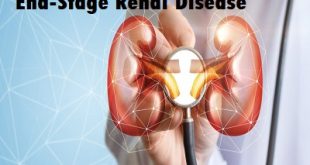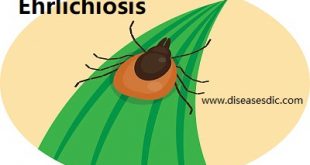Definition
Ectropion of the eye is when your lower eyelid turns outward away from the eyeball and exposes the pink inner lining of the eyelid. It mainly affects the lower eyelid and can occur in one or both eyes and is different from entropion where the eyelids turn inward. Lower lid ectropion is very common in older persons and is said to be found more often in men than in women.
The most common symptoms of ectropion are; tearing, dry eyes, and burning and can cause eye infections. Ectropion usually occurs as a result of the aging process. When the connective tissue of the eyelid becomes weaker, it causes the lid to turn out so that the edge of the lower lid is no longer against the eyeball. Other causes of ectropion may include facial paralysis related issues such as Bell’s Palsy, scar tissue from burns, or birth defects that occur before birth.
Ectropion eye
Types of Ectropion
There are three fundamental types of ectropion, each with diverse causes and different treatments.
- The most common is Involutional, due to the passing of years and laxity at which they grow in the tissue. This fact, completely associated with aging, means that the position of the eyelid against gravity can change.
- Paralytic ectropion, in which changes to the functioning of the orbital muscle, in charge of closing the eye, affects the position of the eyelid.
- And the third type, perhaps the most common, is Cicatricial ectropion, in which the eyelid everts due to the tractional action of the skin affected by a dermatological issue.
Pathophysiology
In involutional ectropion, the tarsoligamentous sling supporting the eyelid by attachment to the orbital rim via the medial and lateral canthal tendons becomes lax. Wher in the paralytic ectropion, orbicularis muscle tone is weak or absent due to facial nerve palsy. In cicatricial ectropion, the anterior or middle lamellae are shortened due to scarring. Midfacial hypoplasia, where the inferior obital rim is located relatively posterior to the eyeball, results in both decreased lower eyelid support and an increased propensity for lower eyelid retraction.
Ectropion risk factors
Factors that increase your risk of developing ectropion include:
Age: The most common cause of ectropion is weakening muscle tissue associated with aging.
Previous eye surgeries: People who have had eyelid surgery are at higher risk of developing ectropion later.
Previous cancer, burns, or trauma: If you’ve had spots of skin cancer on your face, facial burns or trauma, you’re at higher risk of developing ectropion.
Causes of Ectropion
It can be caused by:
Muscle weakness: As you age, the muscles under your eyes tend to weaken, and tendons stretch out. These muscles and tendons hold your eyelid taut against your eye. When they weaken, your eyelid can begin to droop.
Facial paralysis: Certain conditions, such as Bell’s palsy, and certain types of tumors can paralyze facial nerves and muscles. Facial paralysis that affects eyelid muscles can lead to ectropion.
Scars or previous surgeries: Skin that has been damaged by burns or trauma, such as a dog bite, can affect the way that your eyelid rests against your eye. Previous eyelid surgery (blepharoplasty) can cause ectropion, particularly if a considerable amount of skin was removed from the eyelid at the time of surgery.
Eyelid growths: Benign or cancerous growths on your eyelid can cause the lid to turn outward.
Genetic disorders: Rarely is ectropion present at birth (congenital). When it is, it’s usually associated with genetic disorders, such as Down syndrome.
Symptoms
The symptoms are caused by the cornea and conjunctiva being exposed, and can include:
- Excess tearing
- Dry eyes
- Inability to close the eyelids completely (especially with paralytic ectropion)
- Eye and eyelid itching, burning, or crusting (from chronic conjunctivitis)
- Blurry vision, sensitivity to light, and eye pain (from infection or ulceration of the cornea)
Sometimes, ectropion is part of something called floppy eyelid syndrome. With this syndrome, your upper eyelids may easily turn inside out. You may often wake up with an eyelid that has turned inside out. Floppy eyelid syndrome can lead to symptoms like those of ectropion.
Ectropion complications
Long-term irritation, excessive dryness, and exposure of the cornea can lead to conjunctivitis or infection of the eye. This can result in infected pus or fluid around your eye and on your eyelashes, especially when you wake up in the morning. Other complications may include:
- Corneal abrasions (scratches on the cornea or surface of the eye)
- Corneal ulcers (sores on the cornea or surface of the eye)
- Impaired vision
- Permanent blindness
Diagnosis
It can usually be diagnosed during a physical examination. This may be carried out by your GP or an ophthalmologist (a specialist in diagnosing and treating eye conditions).
During the examination, the doctor may pull down on your eyelid to see how quickly it snaps back after being released. This is an effective method of assessing whether the muscles and ligaments that support your eyelid have weakened.
Treatment
If your ectropion is mild, your doctor might recommend artificial tears and ointments to ease the symptoms. Surgery is generally required to fully correct ectropion.
Surgery
The type of surgery you have depends on the condition of the tissue surrounding your eyelid and on the cause of your ectropion:
Ectropion caused by muscle and ligament relaxation due to aging: Your surgeon will likely remove a small part of your lower eyelid at the outer edge. When the lid is stitched back together, the tendons and muscles of the lid will be tightened, causing the lid to rest properly on the eye. This procedure is generally relatively simple.
Ectropion caused by scar tissue from injury or previous surgery: Your surgeon might need to use a skin graft, taken from your upper eyelid or behind your ear, to help support the lower lid. If you have facial paralysis or significant scarring, you might need a second procedure to completely correct your ectropion.
Before surgery, you’ll receive a local anesthetic to numb your eyelid and the area around it. You may be lightly sedated using oral or intravenous medication to make you more comfortable, depending on the type of procedure you’re having and whether it’s done in an outpatient surgical clinic.
After the surgery you might need to:
- Wear an eye patch for 24 hours
- Use an antibiotic and steroid ointment on your eye several times a day for one week
- Use cold compresses periodically to decrease bruising and swelling
After the surgery you will likely experience:
- Temporary swelling
- Bruising on and around your eye
Your eyelid might feel tight after surgery. But as you heal, it will become more comfortable. Stitches are usually removed about a week after surgery. You can expect the swelling and bruising to fade in about two weeks.
Ectropion prevention
Because entropion often occurs naturally with aging or after scarring, it is difficult to prevent. To reduce your risk of developing entropion caused by injury, wear protective eyewear during activities that could injure the eye.
 Diseases Treatments Dictionary This is complete solution to read all diseases treatments Which covers Prevention, Causes, Symptoms, Medical Terms, Drugs, Prescription, Natural Remedies with cures and Treatments. Most of the common diseases were listed in names, split with categories.
Diseases Treatments Dictionary This is complete solution to read all diseases treatments Which covers Prevention, Causes, Symptoms, Medical Terms, Drugs, Prescription, Natural Remedies with cures and Treatments. Most of the common diseases were listed in names, split with categories.








if I look at TV water will be coming out from my eyes
There are many reasons for water to come, for example power in one eye, strain, infection, allergy, lid & sac problem, etc. Don’t neglect, get a consultation & know the reason. Time may not heal everything!